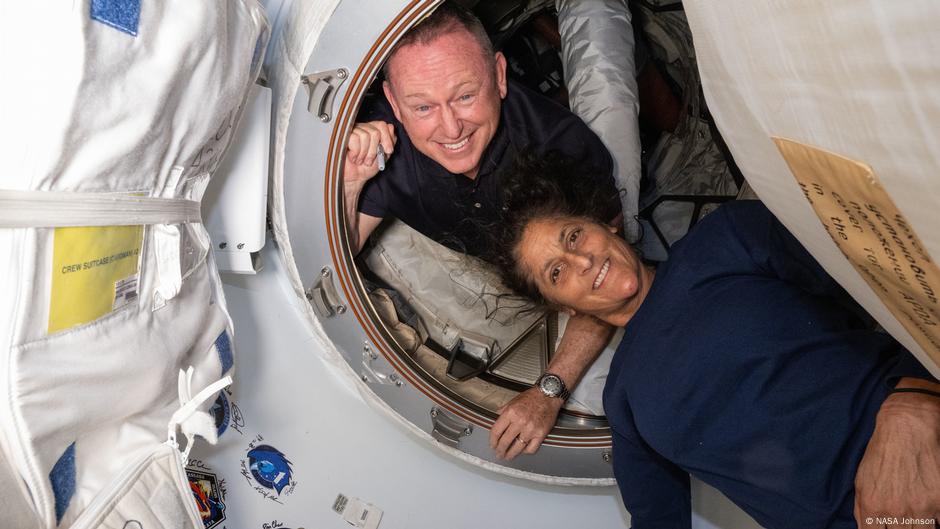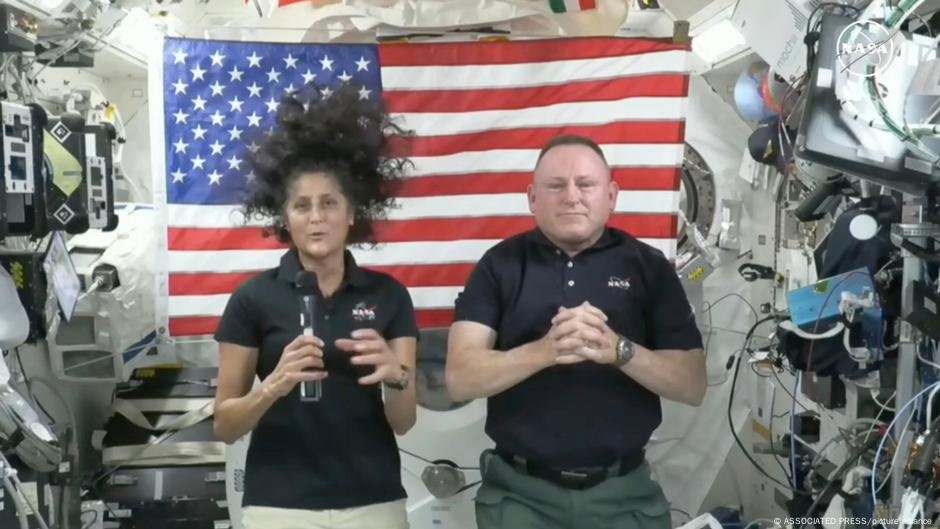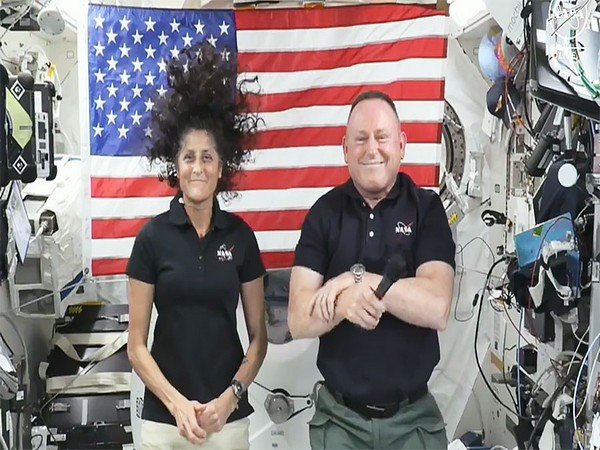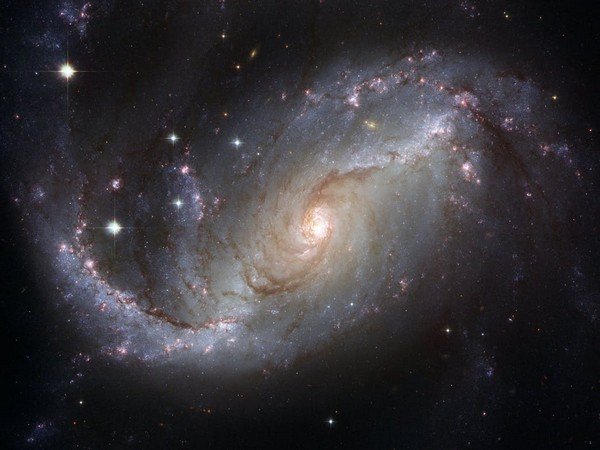
Stranded in Space: Unraveling the Body’s Journey
Astronauts Sunita Williams and Barry Wilmore were anticipated to spend days in space rather than enduring nine months. Discover how radiation and altered gravitational forces affect the human body during their extended stay.
There were significant concerns raised about the possible health hazards faced by the marooned NASA astronauts Barry “Butch” Wilmore and Sunita “Suni” Williams during their time in space. Upon returning to Earth in March 2025 following an unforeseen stay of nine months aboard the International Space Station (ISS), their systems would have adapted to exposure from radiation and microgravity.
The impact of radiation and microgravity affects all astronauts similarly—beginning with symptoms like nausea and puffy faces—but their mission was intended to last just one week. This raised the query: Could these effects potentially be more severe for Suni and Butch?
In June 2024, Williams and Wilmore found themselves marooned at the ISS when their Boeing Starliner encountered technical issues en route. It was considered too risky to return them using the same craft. Prior to this mission spanning 2024-2025, both had accumulated extensive experience with multiple trips into space totaling several hundred days each. Given that the Starliner’s flight was meant as a trial run, they would have undergone rigorous preparation and training for such an emergency situation.
The requirements needed to become an astronaut
Human beings have not naturally adapted to survive in space—specifically, environments devoid of Earth’s protective atmosphere and characterized by near or weightlessness. Consequently, individuals venturing into space must undergo rigorous specialized training and receive meticulous health surveillance throughout all stages: prior to departure, during their time in orbit, and after returning to terrestrial conditions.
Astronauts chosen for human spaceflights are deemed competent not just in executing their designated tasks but also in handling complex and dynamic scenarios.
Wilmore and Williams served as test pilots.
The initial manned mission of Boeing’s Starliner spaceship
To the ISS. However, propulsion problems with their spaceship led to an extension of their eight-day mission. They ended up joining a routine crew, referred to as SpaceX Crew 9.
Shortly after being marooned, former German astronaut Thomas Reiter remarked that he believed it would be quite burdensome, yet added that “they can manage it.”
Reiter embarked on two space missions; his initial one was aboard Mir, a Soviet-era space station that was deorbited in 2001, followed by serving as a flight engineer on the ISS. During her maiden voyage into space, Williams took over Reiter’s position.
“As both of them are well-versed in the procedures aboard the ISS,” stated Reiter.
One of the greatest hazards of space travel is radiation.
Space agencies allocate whole divisions to investigate how space impacts the human body—the German Aerospace Center (DLR), for example, operates a research facility called :envihab located near Cologne.
In June 2024, the magazine
Nature
has released over 40 research papers dubbed as the “most extensive collection of information ever amassed in the field of aerospace medicine and space biology.”
One of the studies was called TWINS. This study included 10 laboratories that conducted comparisons.
Astronaut Scott Kelly, who spent nearly one year aboard the ISS in 2015
, along with his identical twin Mark, who is also an astronaut but remained on Earth. It was through their study that they identified one of the significant hazards associated with long-duration space missions: exposure to radiation.
“Space radiation exposure will likely be the major constraint on how effectively astronauts can perform or how extended their duration in space might be,” explained Susan Bailey, a radiation biologist at Colorado State University. Bailey headed up the research within the TWINS study focusing on the impact of radiation on telomeres—small protective structures found at the ends of human chromosomes.
“Exposure to radiation can be extremely harmful to our DNA,” stated Bailey.
This exposure boosts cancer risk for astronauts and elevates oxidative stress within their bodies.
What we aim for is protecting them from severe long-term consequences and immediate risks,” Bailey explained. “It’s crucial to develop protective measures so that astronauts remain safe throughout their space mission, whether they’re stationed on the Moon or even Mars.
Astronauts face strict caps on the total radiation they can encounter over their professional lifetimes as set by space agencies.

Weightlessness: From Kidney Stones to Impaired Vision
In microgravity conditions of space, bones can become less dense; astronauts typically experience a loss of about 1-1.5% of their bone density each month they spend in space.
This might also result in alterations of mineral levels within the body.
result in health risks
For instance, elevated amounts of calcium within the body’s urinary system, responsible for eliminating waste products like urine, may result in the formation of kidney stones.
“When they return, they cannot join the dance floor just like anyone else who has spent many months in zero gravity,” Reiter stated.
This environment can also cause changes to vision, with fluids in the body shifting to the head and putting pressure on the eyes.
Extended pressure may result in Spaceflight Associated Neuro-ocular Syndrome, potentially causing permanent changes to the eye’s focusing capability.
Once they get back to Earth, both Williams and Wilmore will undergo routine health checks.
There is ample food and water available on the ISS.
Even though traveling to space poses significant health hazards, these concerns are outweighed by the effective fulfillment of pressing requirements through the use of the ISS.
“If suddenly there are two additional people, they wouldn’t immediately run out of water, oxygen, or food,” Reiter stated.
The requirements for food, water, oxygen, and carbon filtration are consistently maintained through resupply missions.
Additionally, there are six dormitories, two restrooms, and a gymnasium—offering ample space for everyone to have their own area.
Additionally, psychological support will have benefited from incorporating the long-term astronauts into the continuous activities aboard the ISS.
Wilmore and Williams promptly became engaged in scientific and supportive tasks alongside their fellow astronauts.
“Astronauts aspire to go to space and spend their entire lives training for this.” They might have believed that getting marooned in space would be “quite magnificent,” as Bailey stated.
Edited by: Zulfikar Abbany
Sources:
Space Omics and Medical Atlas (SOMA) Across Orbits (Nature, 2024)
https://www.nature.com/immersive/d42859-024-00009-8/index.html
Human health risks (NASA)
https://www.nasa.gov/hhp/human-system-risks/
What Is Spaceflight-Associated Neuro-Ocular Syndrome? (NASA, 2021)
The aerospace medicine research center called envihab located in Cologne (DLR)
https://www.dlr.de/en/me/research-and-transfer/research-infrastructure/envihab-cologne/
The article was initially published on August 20, 2024, and has been updated as of March 17, 2025.
Author: Matthew Ward Agius
Share this content:




















Post Comment